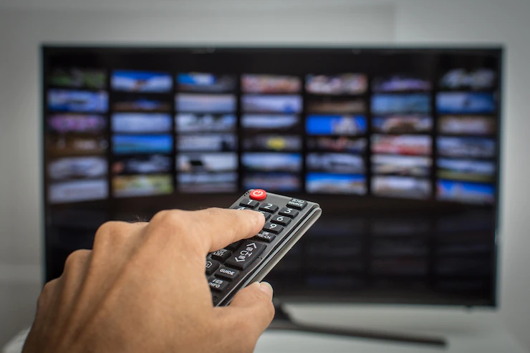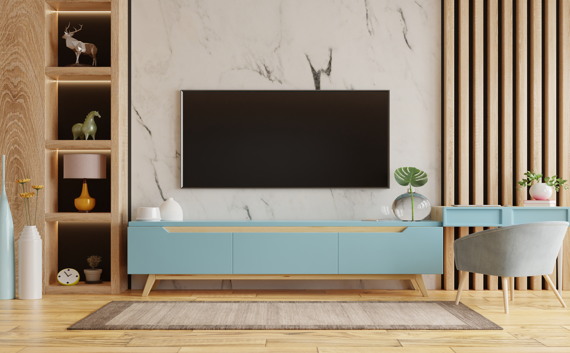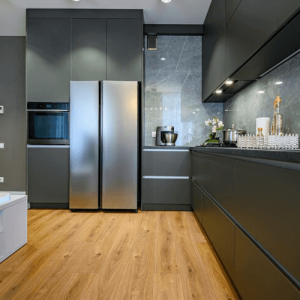Which TV (LED or OLED) is right for you?
One of the most entertaining devices in the house is the TV, and buying this fun device is very enjoyable, but before buying, you will definitely have questions in your mind. Choosing a TV will be a bit confusing despite its wide variety, but the thought of watching your favorite movies and series and programs with the best quality will excite you a lot. When you are looking for a TV, you will definitely hear the name OLED. This TV is very light and slim and has very high contrast and color quality. But it doesn’t mean that OLED TVs are necessarily better than LED TVs. In the following, we will compare these two TVs (LED or OLED) and you will get to know the capabilities of these two better.

Tel color widthLED or OLED vision</span >
OLED TV panels were superior to LED in this feature, but over time, by improving the purity of light in the background, quantum dots allowed LED TVs to improve in color accuracy. Color brightness and color volume have a lot of improvement, which makes LEDs have nothing less compared to OLEDs and they are equal in this feature. So, if your choice is a TV with a high color range, both LED and OLED are good options.
black level
One of the most important features that affect image quality is the ability of a screen to produce deep and dark black colors. Deeper black increases the contrast, so the final image will be of higher quality and closer to reality. OLED TVs have the best panel with an excellent black level and none of the problems of LED regarding black color.
Screen brightness
When it comes to TV brightness, LEDs are clearly brighter than OLEDs. The backlight of these TVs consists of large and powerful LEDs. OLED TVs can also have a significant brightness because due to their good black color, it creates a great contrast between darkness and brightness. But OLED TVs cannot always have the highest brightness, which reduces their life, and it will take more time for each pixel to return to full black.

Response time, update images and input lag</p >
The time it takes to change the state of each pixel from off to light is called response time, and the faster it happens, the less motion blur occurs. Since OLED pixels combine the light source and color in one diode, they can change the brightness of the pixels quickly. Therefore, in this field, OLED TVs are superior to LED TVs.
Updating images means the number of times the entire image on the screen changes, and the higher the speed of changing images, the smoother everything looks. If we consider the image update unit Hertz, OLED TVs are 1000 times more than LED TVs. So OLED TVs are superior in this feature.
The input delay is the distance between pressing a button on the game console controller and the display on the TV, and it is not important for those who want to play with the TV. Because OLED TVs have a shorter response time, the input lag is negligible. OLED TVs are superior in this feature.
viewing angleLED or OLED TV
In this feature, OLEDs are superior to LED. The best viewing angle for watching LED TVs is from the front, and as the angle is tilted to the sides, the clarity, brightness and contrast decrease. he does. The screen of OLED TVs can be viewed from any angle without reducing the quality of the image.
LED or OLED TV screen dimensions span>
OLED TVs have come a long way in this field and their size has become bigger than before. But LED TVs are superior in this feature and can easily produce 100-inch or larger TVs while OLED TVs have not yet reached 90 inches.
Lifetime TVLED or OLED< /strong>
There is no exact information about the lifespan of OLED TVs yet, but due to the long and proven history of LED TVs, LEDs are superior in this feature.

human health
Can a TV damage our health and harm us? The answer is yes. Blue light in televisions causes damage to health and eyes, and both televisions produce blue light. But OLEDs produce much less blue light compared to LEDs and prevent eye fatigue and damage.
Is LED TV power consumption higher or OLED?
OLED TVs do not need backlight and pixels are energy efficient and low consumption. But LED TVs need backlight to produce light. Therefore, OLED TVs consume less electricity.
Burn the screen
The phosphors that cover the back of the TV screen, when they shine for a long time without rest, cause them to wear out and burn, and the so-called screen burns. The same thing happens with OLED TVs because the things that make these screens light up can degrade over time. Since this never happens to LED TVs, LED TVs are superior in this feature.
Price Is LED TV suitable or OLED?
OLEDs are more advanced TVs and have a higher price than LEDs. Although they have almost tried to reduce the prices, the prices of OLEDs are still higher. So if you are looking for cheaper TVs, your choice will be ELDs.
Concluding remarks
In terms of picture quality, OLED TVs are superior to LED and beat them. OLED is also lighter and thinner, consumes less power, has better viewing angles by a wide margin, and while slightly more expensive, it’s significantly cheaper. Today, OLED is the top technology in TVs. According to the description of the features of these TVs and considering your own needs, you can make the best choice.
To see more articles here Click and follow us on various social networks Instagram, Telegram, Aparat and LinkedIn Follow.
 Lopez home appliance store | Selling Lopez household appliances is simply everything
Lopez home appliance store | Selling Lopez household appliances is simply everything 







